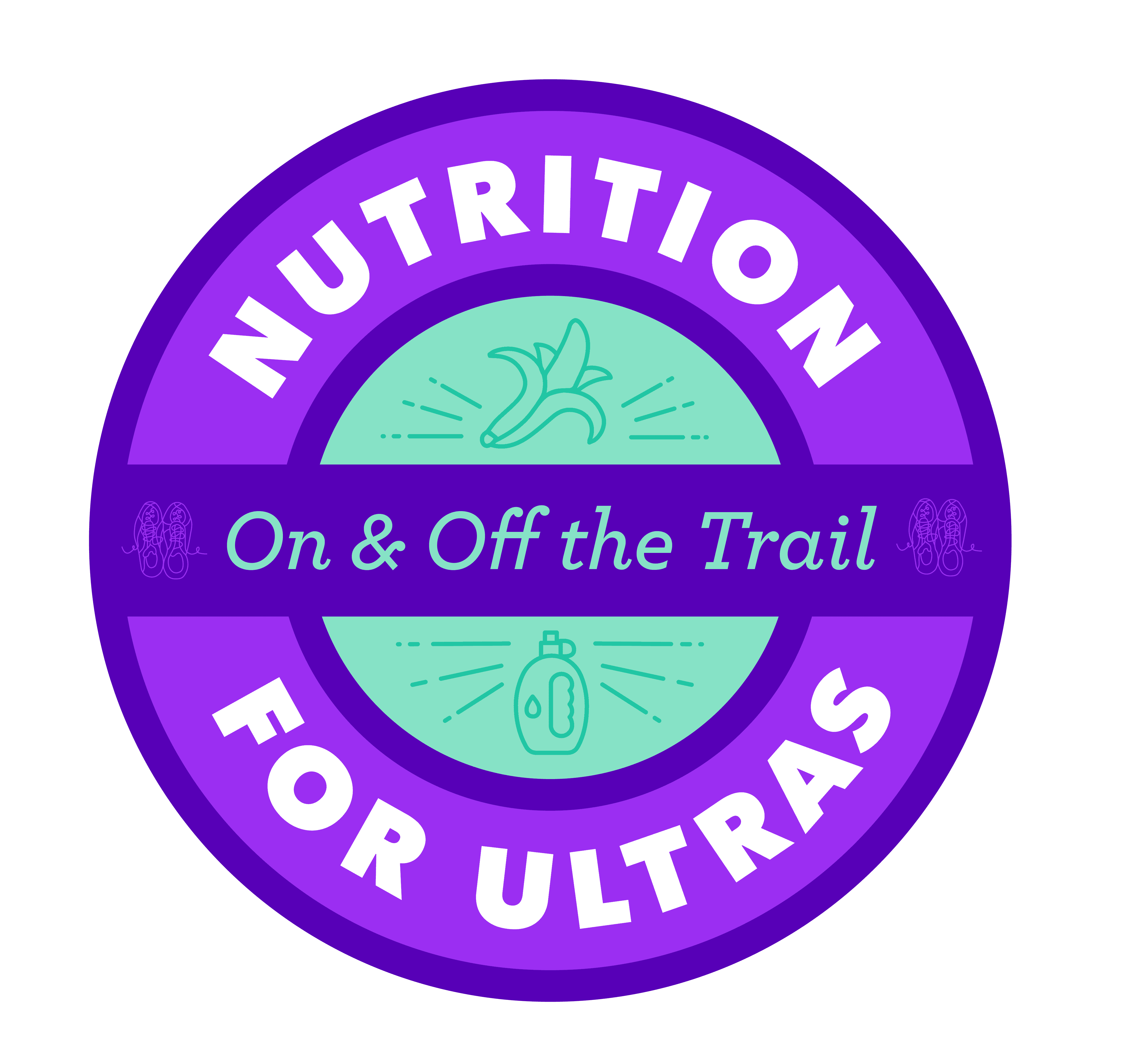You’ve been faithfully following the training program: putting in the miles and doing the strength circuits. You’re going to bed before 10 pm, you’ve eliminated your nightly glass of wine, and you’re even foam rolling as you watch Queer Eye on Netflix.
You’re doing everything right, so why do you lose steam during your long runs—and sometimes even your shorter ones? Chances are, it’s your nutrition. You’re not properly fueling before and after, and most importantly, during your runs. And when you don’t eat for running performance and endurance, your GI tract might revolt. Your legs might feel heavy. You might get a killer headache or you might feel nauseous. Or the running-sucks-or-maybe-I-just-suck track might play on repeat in your head. Or you simply might incrementally peter out, like a car whose gas gauge inches towards E.-
 BEST FOR: Beginner to intermediate runners who have their sights set on a 50K run, likely on trails. PREREQS: Have run at least one marathon (road or trail) in the last year; been running consistently for at least one year; have a current mileage base of 20-25 miles/week for at least 8-10 weeks (plus your weekly long run should be in the 8-10 mile range); no injuries, or are on your way to being injury-free—and willing to do the PT work you need to do to stay that way; a nearby trail you can train on at least 1x/week (more is better); time to commit to the running program AND the strength circuits and weekly yoga. NUMBER OF WEEKS: 20 Each week, there are five runs (one is an optional walk); two strength circuits; one yoga session; and one rest day. Together, the combination builds a strong, capable body + mind so you can go the distance, feeling solid and happy, on race day.
BEST FOR: Beginner to intermediate runners who have their sights set on a 50K run, likely on trails. PREREQS: Have run at least one marathon (road or trail) in the last year; been running consistently for at least one year; have a current mileage base of 20-25 miles/week for at least 8-10 weeks (plus your weekly long run should be in the 8-10 mile range); no injuries, or are on your way to being injury-free—and willing to do the PT work you need to do to stay that way; a nearby trail you can train on at least 1x/week (more is better); time to commit to the running program AND the strength circuits and weekly yoga. NUMBER OF WEEKS: 20 Each week, there are five runs (one is an optional walk); two strength circuits; one yoga session; and one rest day. Together, the combination builds a strong, capable body + mind so you can go the distance, feeling solid and happy, on race day. -
 BEST FOR: Beginner to intermediate runners who have their sights set on a 50 Mile race, likely on trails. PREREQS: Have completed a 50K within 12 months of starting program; no injuries, or are on your way to being injury-free—and willing to do the PT work you need to do to stay that way; have a nearby trail you can train on at least 1x/week (more is better); a nearby physical therapist who knows your body + your goals and who you can see regularly, especially in the thick of training; a foam rolling routine you will complete regularly (at least 3x a week); enough time to train and recovery properly (time to prepare food + eat well, foam roll, get adequate sleep) NUMBER OF WEEKS: 22
BEST FOR: Beginner to intermediate runners who have their sights set on a 50 Mile race, likely on trails. PREREQS: Have completed a 50K within 12 months of starting program; no injuries, or are on your way to being injury-free—and willing to do the PT work you need to do to stay that way; have a nearby trail you can train on at least 1x/week (more is better); a nearby physical therapist who knows your body + your goals and who you can see regularly, especially in the thick of training; a foam rolling routine you will complete regularly (at least 3x a week); enough time to train and recovery properly (time to prepare food + eat well, foam roll, get adequate sleep) NUMBER OF WEEKS: 22This 22-week 50 Mile program is designed for beginner to intermediate runners who have their sights set on a 50 Mile race, likely on trails. There are five to six weekly runs and two weekly strength circuits that build a strong, capable body + mind so you can go the distance, feeling solid and happy, on race day.
If you don’t meet them but are drooling at the thought of a 50 Miler, please email us at tlamclub@anothermotherrunner.com and we’ll chat.
-
Sale!
 The greatest hybrid hat ever! All the style and sass of a trucker, yet all the athletic practicality of a running hat. Thus, the BoCo Gear Running Trucker. Wear it running miles or running around town. This design pumps up the volume on the Many Happy Miles streaming-sun image. Set against an aqua background, it's as if the sun is rising on the right side of the hat, and rays of light are shooting across the front toward a black-and-white Many Happy Miles endless road logo with our little shoes on it. On the right side of the white laser-cut nylon mesh is a large Another Mother Runner logo patch.
The greatest hybrid hat ever! All the style and sass of a trucker, yet all the athletic practicality of a running hat. Thus, the BoCo Gear Running Trucker. Wear it running miles or running around town. This design pumps up the volume on the Many Happy Miles streaming-sun image. Set against an aqua background, it's as if the sun is rising on the right side of the hat, and rays of light are shooting across the front toward a black-and-white Many Happy Miles endless road logo with our little shoes on it. On the right side of the white laser-cut nylon mesh is a large Another Mother Runner logo patch. -
Sale!
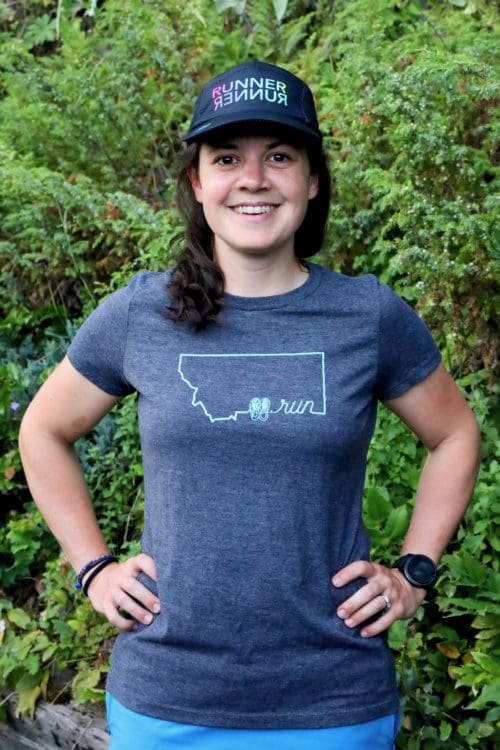 This tee is part of our 2022 series celebrating the states we're visiting for in-person races. (At long last!) It was made for our first stop, the Missoula Marathon in jaw-droppingly gorgeous Montana. The state outline, complete with the word "run" and our shoes logo, is in (big!) sky blue ink, set on a heathered charcoal tee. Equally at home with shorts, joggers, or jeans. Available in sizes XS-2XL. Size Chart
This tee is part of our 2022 series celebrating the states we're visiting for in-person races. (At long last!) It was made for our first stop, the Missoula Marathon in jaw-droppingly gorgeous Montana. The state outline, complete with the word "run" and our shoes logo, is in (big!) sky blue ink, set on a heathered charcoal tee. Equally at home with shorts, joggers, or jeans. Available in sizes XS-2XL. Size Chart -
 BEST FOR: If you’ve had a situation, goal, or issue swirling around in your brain for a few months, taking an hour to talk through it is a great way to clear up the clouds and gain perspective.
BEST FOR: If you’ve had a situation, goal, or issue swirling around in your brain for a few months, taking an hour to talk through it is a great way to clear up the clouds and gain perspective.Maybe you’re a newer runner, and want to plot out your upcoming year of races with an experienced coach.
Maybe you’ve had a disappointing race, and you need to talk through it—and get psyched for another training cycle. Maybe you’ve had a string of injuries, and are finally ready for an in-depth conversation about how to break the cycle. Maybe you’ve got your eye on a Boston-qualifying time, and need to know how to nab that sucker. Maybe you’re thinking of transitioning from runner to triathlete—or vice versa—and want help and want help laying out the steps (and strokes!) you’ll take. If you’re in one of these—or countless other what-do-I-do now—scenarios, a Coaching Consult is the perfect next step for you. -
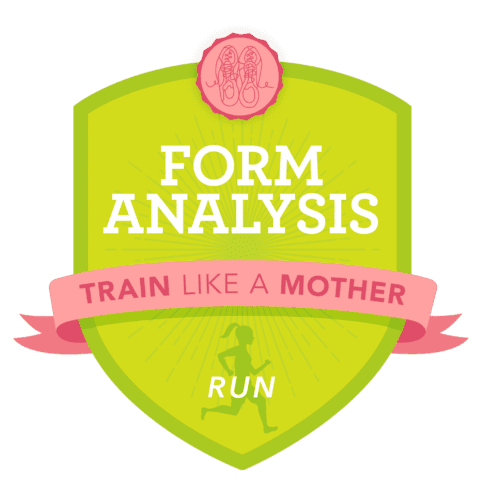 BEST FOR: Truthfully, nearly every runner can benefit from an expert coach watching her form and offering feedback; the coach may uncover an injury-in-waiting or an easy way to increase efficiency. PREREQS: Are regularly injured;Are coming back from pregnancy, when alignment has shifted, want to increase speed, know they can be a more efficient runner, or are focused on minimizing the risk of future injury.
BEST FOR: Truthfully, nearly every runner can benefit from an expert coach watching her form and offering feedback; the coach may uncover an injury-in-waiting or an easy way to increase efficiency. PREREQS: Are regularly injured;Are coming back from pregnancy, when alignment has shifted, want to increase speed, know they can be a more efficient runner, or are focused on minimizing the risk of future injury.A second set of eyes is always a good thing. whether you’re polishing up a work project or wondering if your living room should actually be painted orange.
Your running form is no exception. In fact, except for race pictures, you rarely see yourself running. While you can feel balanced and strong on the run, your body’s subtle movements, which a seasoned coach can see, may be telling a different story. If your right hip drops with every step, or your posture is too upright, or your arms are spaghetti-like, you may be setting yourself up for an inefficient run (at best) or a serious injury (at worst). -
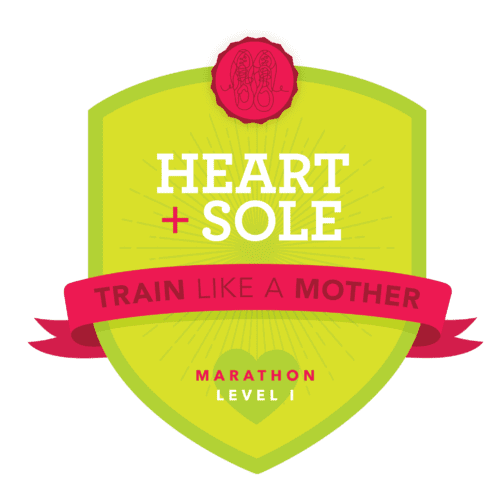 BEST FOR: First-time marathoners PREREQS: Runs of at least 45-60 minutes 3-4 days of the week for at least eight weeks; injury-free. Previous race experience is not mandatory, but having a half-marathon under your soles will be helpful for perspective as your runs get longer. NUMBER OF WEEKS: 20
BEST FOR: First-time marathoners PREREQS: Runs of at least 45-60 minutes 3-4 days of the week for at least eight weeks; injury-free. Previous race experience is not mandatory, but having a half-marathon under your soles will be helpful for perspective as your runs get longer. NUMBER OF WEEKS: 20Heart + Sole: Marathon, Level 1 is a 20-week program suitable for all runners wanting to take on the motherlode of all races: the marathon. You’ll learn—or continue—to train by heart rate, using your individual zones, calculated by regular testing, to moderate your effort appropriately. You’ll spend plenty of time in the lower zones, building your endurance base; you’ll also spend some time climbing hills, finding different gears with pick-ups and intervals, and practicing your race pace so that you’re ready to thrive on race day.
-
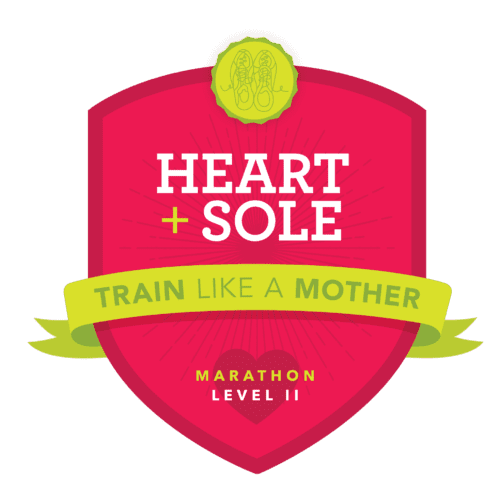 BEST FOR: Experienced runners seeking a challenge and perhaps a marathon PR PREREQS: Runs of at least 60 minutes 4 days of the week for at least 12 weeks; injury-free; marathon experience within the last 18 months. We recommend having completed a Heart + Sole: Level I program (10K, half-marathon, or marathon). NUMBER OF WEEKS: 20
BEST FOR: Experienced runners seeking a challenge and perhaps a marathon PR PREREQS: Runs of at least 60 minutes 4 days of the week for at least 12 weeks; injury-free; marathon experience within the last 18 months. We recommend having completed a Heart + Sole: Level I program (10K, half-marathon, or marathon). NUMBER OF WEEKS: 20In Heart + Sole: Marathon, Level 2, you’ll continue to train by heart rate, using your individual zones, calculated by regular testing, to moderate your effort appropriately. You’ll spend a couple of runs weekly in the lower zones, building your endurance base; you’ll also spend some time climbing hills, finding different gears with pick-ups and intervals, and practicing your race pace so that you’re ready to thrive on race day.
-
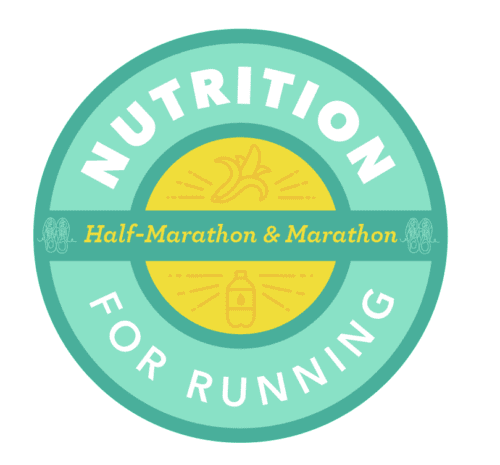 You’ve been faithfully following the training program: putting in the miles and doing the strength circuits. You’re going to bed before 10 pm, you’ve eliminated your nightly glass of wine, and you’re even foam rolling as you watch Queer Eye on Netflix. You’re doing everything right, so why do you lose steam during your long runs—and sometimes even your shorter ones? Chances are, it’s your nutrition. You’re not properly fueling before and after, and most importantly, during your runs. And when you don’t eat for running performance and endurance, your GI tract might revolt. Your legs might feel heavy. You might get a killer headache or you might feel nauseous. Or the running-sucks-or-maybe-I-just-suck track might play on repeat in your head. Or you simply might incrementally peter out, like a car whose gas gauge inches towards E.
You’ve been faithfully following the training program: putting in the miles and doing the strength circuits. You’re going to bed before 10 pm, you’ve eliminated your nightly glass of wine, and you’re even foam rolling as you watch Queer Eye on Netflix. You’re doing everything right, so why do you lose steam during your long runs—and sometimes even your shorter ones? Chances are, it’s your nutrition. You’re not properly fueling before and after, and most importantly, during your runs. And when you don’t eat for running performance and endurance, your GI tract might revolt. Your legs might feel heavy. You might get a killer headache or you might feel nauseous. Or the running-sucks-or-maybe-I-just-suck track might play on repeat in your head. Or you simply might incrementally peter out, like a car whose gas gauge inches towards E. -
 BEST FOR: Runners who have been sidelined for 2 months or more and want find their running legs again PREREQS: Approval from your doctor or physical therapist to resume a weight-bearing activity. The ability to walk briskly for 60 minutes without pain. This demonstrates that the site of injury or bone can handle the impact forces of running. (See FAQ below for more details.) NUMBER OF WEEKS: 12-15 If you have had a long-term injury or illness, are postpartum, or simply hit a roadblock in life or motivation, this is an effective, safe, and fun program to find your running groove again. You'll spend 12 to 15 weeks–you go at the pace that works best for your body—incrementally getting stronger and running longer while two expert coaches, Jennifer Harrison and Elizabeth Waterstraat, will be by your (virtual) side the entire time.
BEST FOR: Runners who have been sidelined for 2 months or more and want find their running legs again PREREQS: Approval from your doctor or physical therapist to resume a weight-bearing activity. The ability to walk briskly for 60 minutes without pain. This demonstrates that the site of injury or bone can handle the impact forces of running. (See FAQ below for more details.) NUMBER OF WEEKS: 12-15 If you have had a long-term injury or illness, are postpartum, or simply hit a roadblock in life or motivation, this is an effective, safe, and fun program to find your running groove again. You'll spend 12 to 15 weeks–you go at the pace that works best for your body—incrementally getting stronger and running longer while two expert coaches, Jennifer Harrison and Elizabeth Waterstraat, will be by your (virtual) side the entire time. -
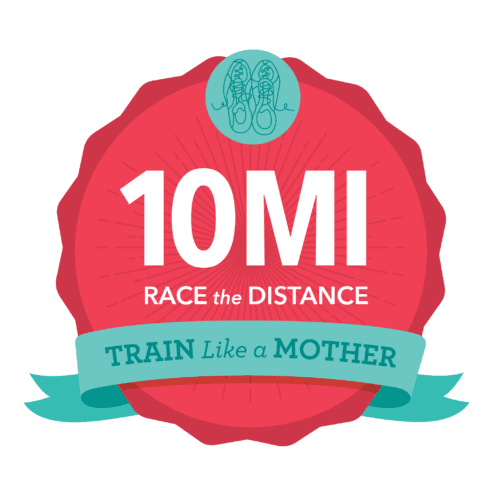 BEST FOR: Runners who want to maximize their training miles PREREQS: Ability to comfortably finish a 4-mile run – your first long run is 5 miles long. That said, because of the Ramp It Up options, this program is suited to a wide range of runners, from 5Kers looking to more than double their mileage to marathoners dialing back on distance and up in intensity. A desire to complete a 10-miler injury free with your body feeling strong. NUMBER OF WEEKS: 15 A 10-mile race is a delightful distance—long enough to cross into double digits, distance-wise, but not one step further—and this is a delightful program to maximize each of your miles. Most of the runs are at an easy pace, making it perfect for a pair or group of women to take on together as you’ll have lots and lots of time on the road (or trail or treadmill) to talk. Working your long runs up to race distance gets you mentally and physically prepped for the demands of the distance, but a range for long runs is given in later weeks to accommodate all levels—and days where your legs haven’t shown up. From the start, this plan integrates start-slow-get-fast pacing strategies so, as you’re standing on the starting line, you know you’re ready to run a smart + strong 10-miler.
BEST FOR: Runners who want to maximize their training miles PREREQS: Ability to comfortably finish a 4-mile run – your first long run is 5 miles long. That said, because of the Ramp It Up options, this program is suited to a wide range of runners, from 5Kers looking to more than double their mileage to marathoners dialing back on distance and up in intensity. A desire to complete a 10-miler injury free with your body feeling strong. NUMBER OF WEEKS: 15 A 10-mile race is a delightful distance—long enough to cross into double digits, distance-wise, but not one step further—and this is a delightful program to maximize each of your miles. Most of the runs are at an easy pace, making it perfect for a pair or group of women to take on together as you’ll have lots and lots of time on the road (or trail or treadmill) to talk. Working your long runs up to race distance gets you mentally and physically prepped for the demands of the distance, but a range for long runs is given in later weeks to accommodate all levels—and days where your legs haven’t shown up. From the start, this plan integrates start-slow-get-fast pacing strategies so, as you’re standing on the starting line, you know you’re ready to run a smart + strong 10-miler.


